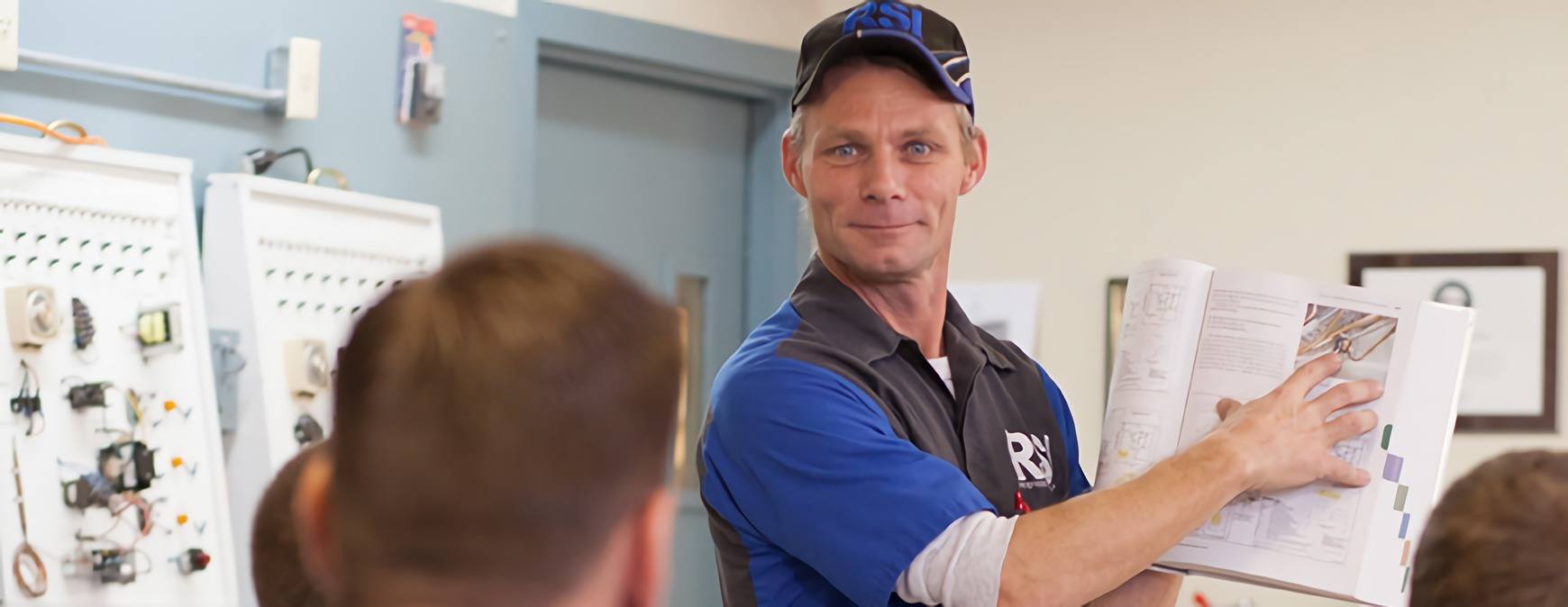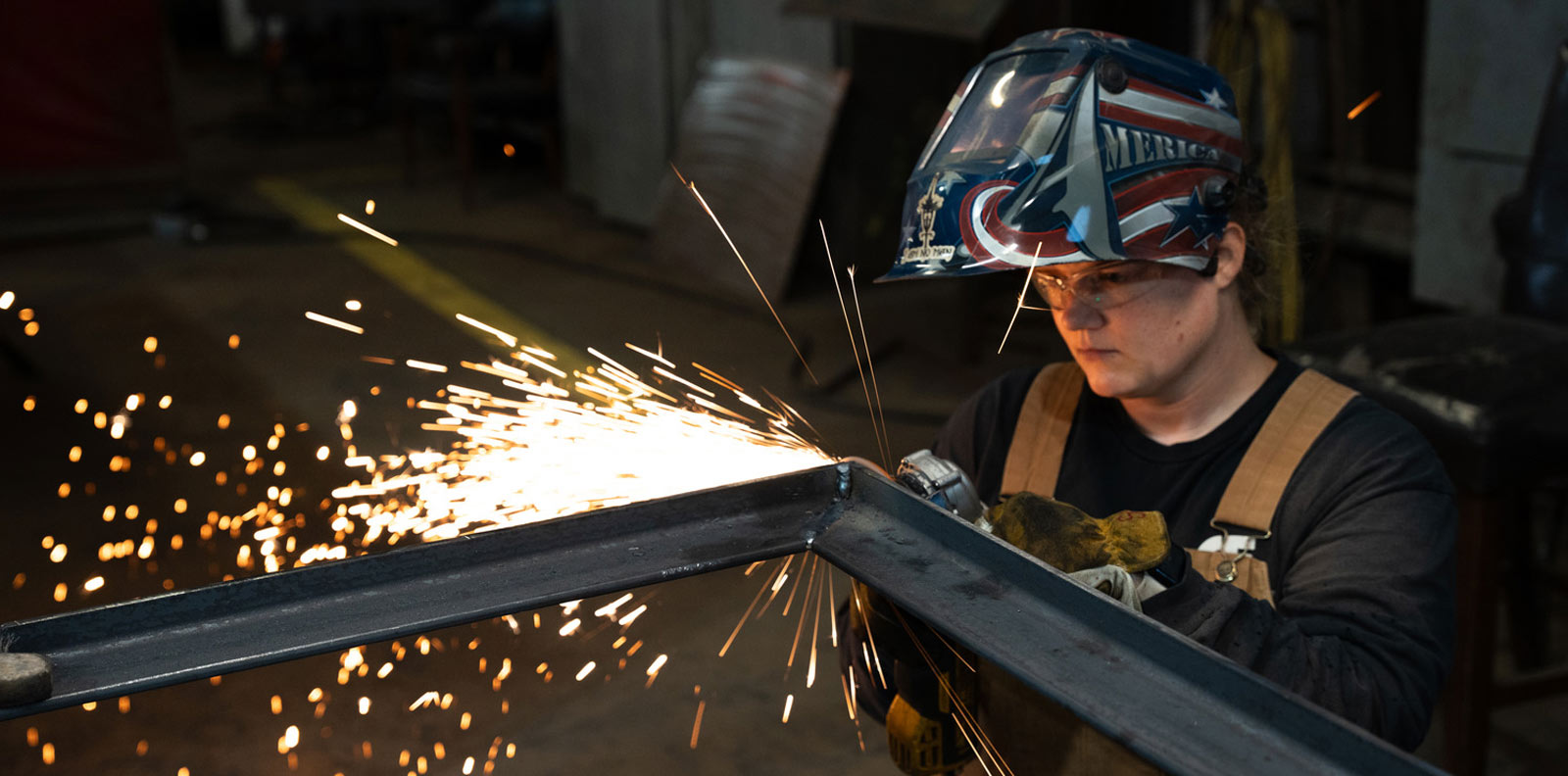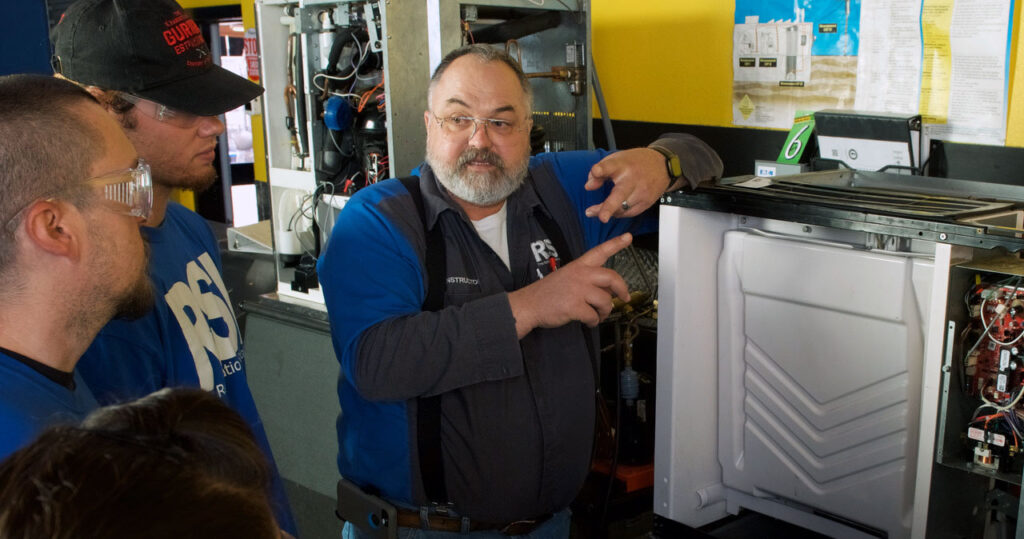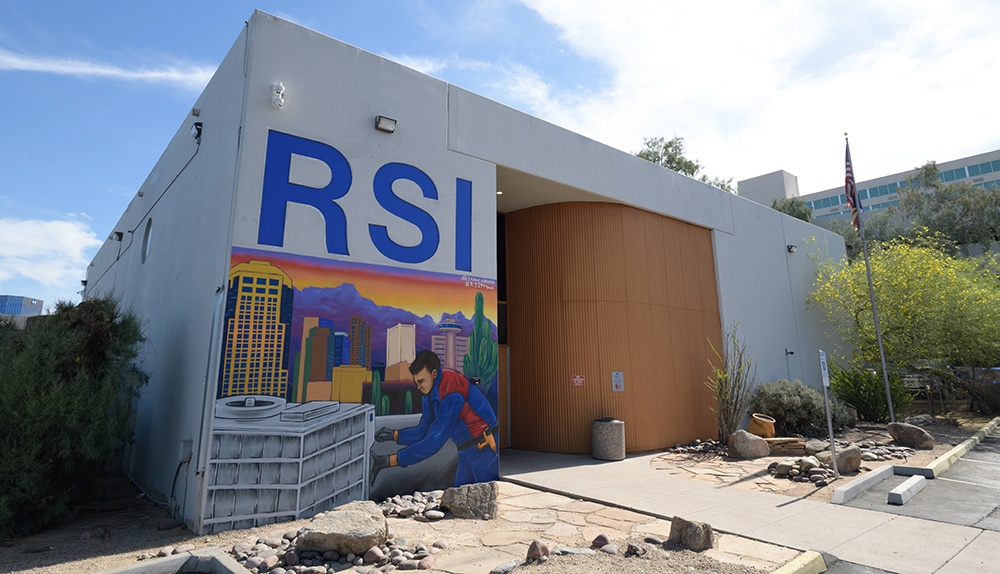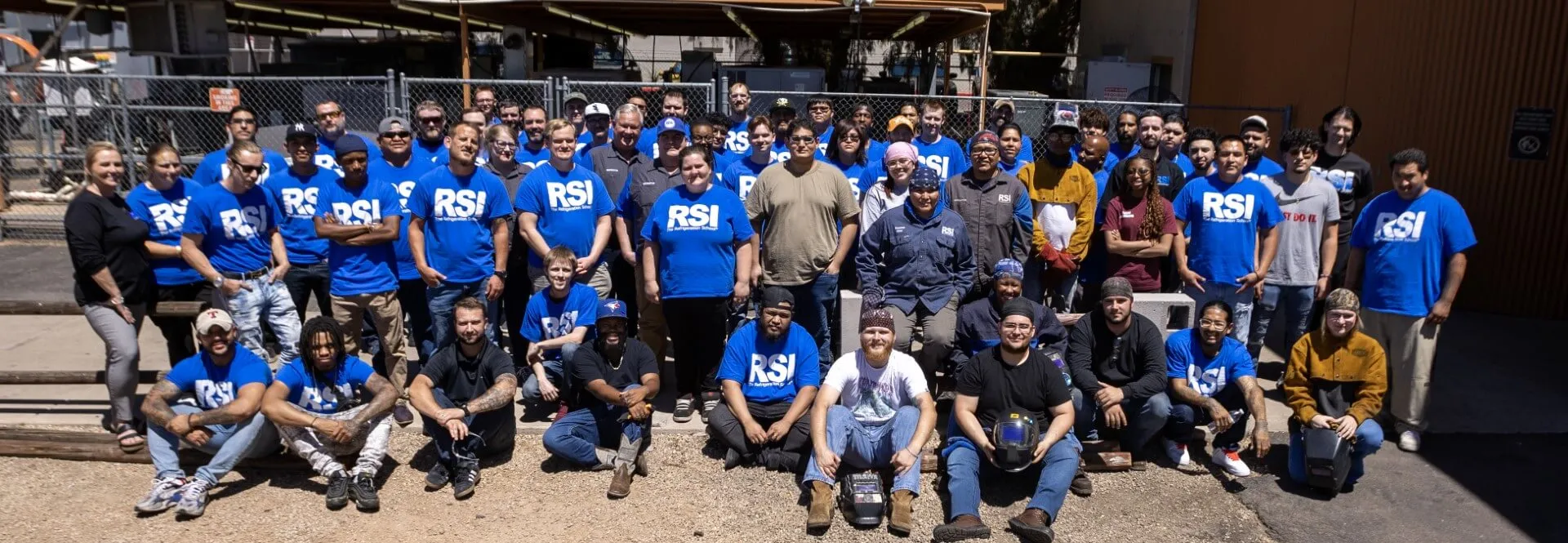RSI is a Great Training Option for Everyone
Learn more about how we can prepare you to advance your career.
As with any field, HVAC/R industry has its own terminology. Here are some terms you will become more familiar with.
HVAC/R Terminology
“HVAC/R” is an abbreviation for heating, ventilation, air conditioning, and refrigeration. Here is the breakdown of specific terminology that falls in each category of HVAC/R.
Heating
- Heating: The addition of energy to cause a rise in temperature is considered heating. 1 Today, central heating is a common way people warm homes and buildings. These systems typically use hot water, warm air, heat pumps, and electric resistance. 2
- AFUE: Furnaces and boilers are the heating systems found in most homes in the U.S. The efficiency of these systems is measured by the annual fuel utilization efficiency (AFUE). This is an assessment of how efficiently the boiler or furnace converts fuel energy to heat throughout one year. 3
- HSPF: Heat pumps utilize a reverse refrigeration cycle to warm buildings. They are also a popular choice for heating in the U.S. The heating seasonal performance factor (HSPF) evaluates the amount of energy a heat pump uses during a heating season. 4
Ventilation
- Ventilation: Oxygen can become depleted inside buildings over time and harmful particulates can accumulate. Ventilation techniques clean the air. These include bringing fresh air inside and polluted air outside. 5
- Indoor Air Quality: The air inside a home or business can be up to 100 times more polluted than the air outside. This is why indoor air quality is so important. Good indoor air quality is achieved when a structure is well ventilated, the temperature and humidity are set at a comfortable level, and pollutants are filtered out.
- Air Filters: Air filters remove contaminants from indoor air. There are several different types including disposable, washable, and high efficiency. Changing air filters once a month is crucial to ensuring optimal performance.
Air Conditioning
- Air Conditioning: Indoor space cooling is known as air conditioning. Air conditioning systems typically consist of a compressor, condenser, expansion valve, and evaporator. These parts work together, along with refrigerant, to bring hot outdoor air into a building, cool it, and pump it throughout the structure or to specific rooms.
- SEER: The seasonal energy efficiency ratio (SEER) is an assessment of how well an air conditioner cools a building. A SEER rating above 13 indicates that a unit operates at a high efficiency. 6 Depending on the region, the Department of Energy requires new A/C units to have a minimum SEER rating of 13 or 14.
- Cooling Load: Several factors contribute to the level of heat in a building: solar radiation, electrical equipment, artificial lighting, and, of course, occupants. These factors are calculated to determine how much heat an HVAC/R system must remove. Collectively they are known as the cooling load. 7
Refrigeration
- Refrigeration: While most air conditioning systems are based on the principle of refrigeration, the equipment in this part of the field typically deals with keeping food cold. Temperature sets air conditioning and refrigeration apart: air conditioning applies for spaces above 60°F and refrigeration for those 40°F and below.
- Second Law of Thermodynamics: Integral to the science of refrigeration, this law states that heat naturally travels from warm areas to cold ones. In A/C and refrigeration units, the condenser forces heat to move in the opposite direction, from cold to hot.
- Refrigerant: Refrigerants are chemicals that serve as the working fluid for refrigerators, air conditioners, and heat pumps. Their main property is the ability to change from a liquid to a gas at low temperatures. They assist in the heat transfer process. 8
After you complete your refrigeration training, you’ll work with all these elements out in the field and your technological knowledge will grow as you get more experience.
Additional Sources
1 – http://www.dictionary.com/browse/heating
2 – Title: Fundamentals of HVAC; Authors: Carter Stanfield and David Skaves; Air-Conditioning, Heating, and Refrigeration Institute; Second Edition; Textbook page 5
3 – https://energy.gov/energysaver/furnaces-and-boilers
4 – Title: Fundamentals of HVAC; Authors: Carter Stanfield and David Skaves; Air-Conditioning, Heating, and Refrigeration Institute; Second Edition; Textbook page 5
5 – Title: Fundamentals of HVAC; Authors: Carter Stanfield and David Skaves; Air-Conditioning, Heating, and Refrigeration Institute; Second Edition; Textbook page 2
6 – https://www.rsi.edu/blog/hvacr/understanding-energy-efficiency-ratings-in-hvacr/
7 – http://encyclopedia2.thefreedictionary.com/Cooling+load
8 – http://www.dictionary.com/browse/refrigerant
This blog has been labeled as archived as it may no longer contain the most up-to-date data. For a list of all current blog posts, please visit our blog homepage at https://www.rsi.edu/blog/
